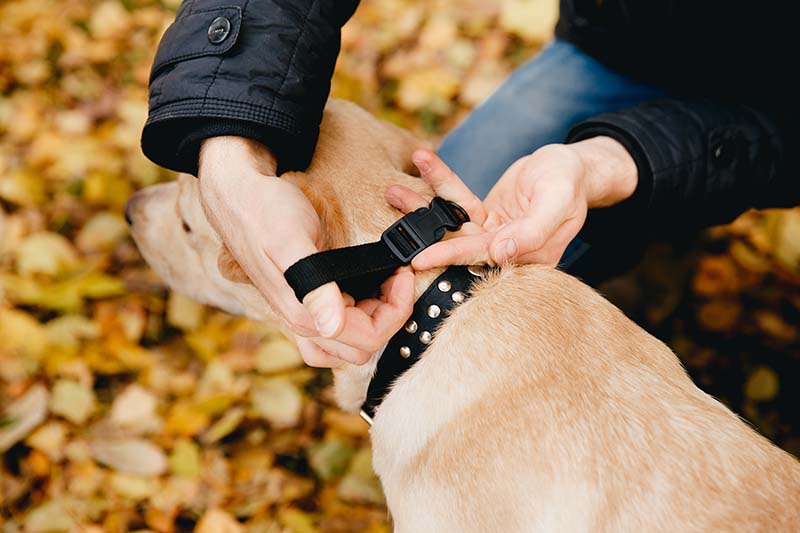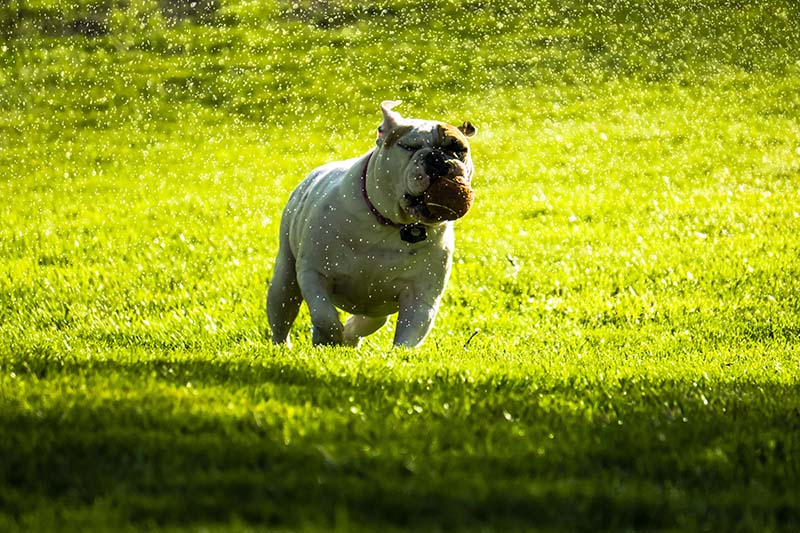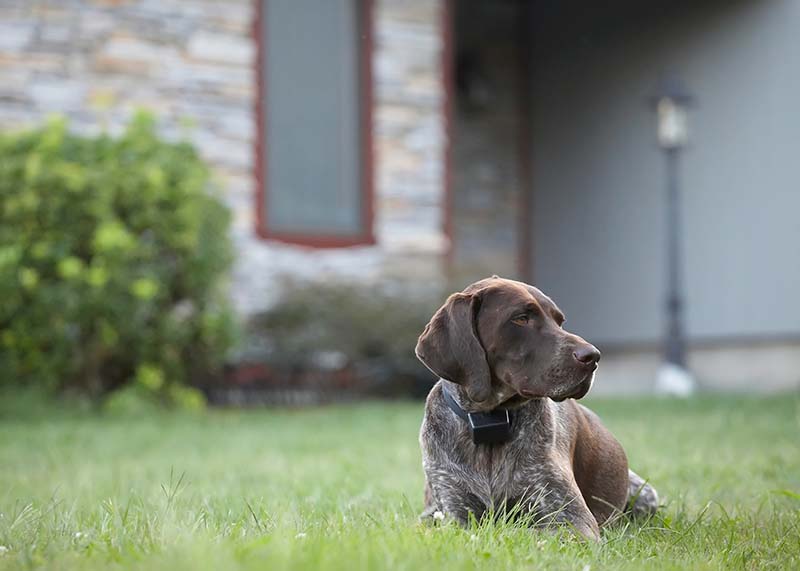Invisible fences have become increasingly popular due to their cost-effectiveness and ease of installation. But what exactly is an invisible fence? An invisible dog fence is an effective way to contain your pet in the yard without obstructing the view.
When considering an invisible fence, it’s important to understand the costs associated with the installation and the process involved before reaching out to contractors. And with a little research and the right resources, you can easily install an invisible dog fence to keep your pet safe and secure. Installing an invisible dog fence typically costs between $800 and $3,000.
The Importance of Having an Invisible Fence
Invisible fences help keep dogs safe while allowing them to enjoy the garden and preserve the natural beauty of the home’s landscaping. Invisible fencing can and is often buried underground, creating a boundary that’s ideal for yards without traditional wired or wooden fences. Small flags are placed along the boundary of the fence and then dogs are trained to stay within them (by use of a leash).
An invisible pet fence transmits a signal from your boundary to the home base monitoring and transmitting device and the receiver attached to your dog’s collar. The fence is actually set about 3–4 inches deep underground with wires that are charged with electricity. They can be placed around your yard’s outer edges or any other boundary you choose.
The transmitter is installed in your garage or house so that you have easy access to it. The shock collar receiver vibrates enough to deter your dog from crossing the boundary. It functions in the same way as an ultrasonic anti-bark collar.
Your dog will feel an electric shock from the underground wiring when it crosses the boundary. The electric shock is intended to surprise your pet but not cause any injury. And you can adjust the amount of electricity your dog receives with most systems. So, for large dogs, a stronger charge may be necessary to keep them contained.

How Much Does an Invisible Fence Cost?
Invisible fencing typically costs between $800-$3,000. The cost of installing an invisible fence will depend on a number of factors including the length of the fence, the type of fence you choose, and whether you hire a professional to install the fence. The first factor that will affect the cost of installation is the type of fence you choose.
There are a variety of different types of invisible dog fences. Some of the most popular types of invisible fences include underground, radio frequency, and sonic. The least expensive option is usually the sonic fence.
Electric fences are typically less than $800 and are fairly easy to install (you can even do it yourself). On the other hand, radio frequency and sonic fences are more expensive. These types of fences typically range anywhere from $800-$3,000 to install.
Quick Cost Comparison Chart
| St. Louis, MO | $1,100 |
| Dallas, TX | $1,425 |
| Cincinnati, OH | $1,350 |
| Minneapolis, MN | $1,200 |
| Denver, CO | $1,465 |
| New York, NY | $1,490 |
| Los Angeles, CA | $1,500 |
| Orlando, FL | $1,130 |
Preparing for Installation
Installing an invisible dog fence requires a significant amount of prep work to ensure that you have a successful installation. Prep work includes measuring your yard, choosing a location to install the transmitter, and identifying the appropriate dogs to use the system. The first step in preparing for the actual installation is measuring your yard.
So, you (or the contractor) will need to measure the perimeter of your yard so you have an accurate idea of how much fence you will need. You should also measure the area inside the fence where your dog will be spending most of its time.
This will help you determine the amount of wire you will need to purchase. Next, you’ll have to choose a location to install your transmitter. The transmitter will be the device that sends a signal to the dog’s collar. The transmitter will need to be placed inside your house or in a garage where it has easy access to electricity.

Additional Costs to Anticipate
Other than the installation for the fence, the highest costs will typically come from any additional equipment that you’ll need. This usually comes in the form of additional transmitters, depending on the size of your yard. You may also need to purchase batteries for the transmitters as well if they don’t have power adapters to charge. If you have multiple dogs, you’ll need to purchase a receiver for each dog.
Training Your Dog to Stay Away from Your Invisible Fence
Once you have verified that the system is working and is transmitting a signal to your dog’s collar, you’ll then need to train your dog on how to use the fence. Training your dog on the invisible fence is a critical step in the installation process.
Essentially, you’ll have to train your dog to understand when the signal is being sent to the collar and when it’s not. This will ensure that your pup doesn’t run into the fence perimeter and get an uncomfortable shock. There are several different ways you can train your dog. Some of the most effective ways to train your dog include traditional training, positive reinforcement, and letting your dog explore the yard by itself.
Traditional Training
Traditional training is most common and will help your dog understand the signal that is being sent to the collar. During this training, start with the system turned off. This will allow your dog to get used to the collar and its weight. Then you’ll need to work your way up to having the system on with the dog wearing the collar. The important thing during this training is to praise (and treat) your dog when it’s not near the fence. This may take some days, but it’s well worth it.
Positive Reinforcement
Positive reinforcement is another effective method of training your dog. During this method, your dog will receive a reward for staying away from the fence. This means that you will have to let your dog get a few shocks to understand where to stop regarding the fence’s boundary – which is why flags are also important. This method is particularly helpful when training young dogs.

Dog Self-Exploration
Another effective method of training your dog is simply to let it explore the yard on its own. Letting your dog explore the yard on its own will allow it to naturally learn where the boundaries are. This method will take some time, but it’s a viable way to train your dog without much effort on your part.
Will Home Insurance Cover Invisible Fence Installation?
Home insurance is designed to provide protection against damage or loss caused by various events, including but not limited to, fire, theft and vandalism. But it’s important to note that most home insurance policies will not cover invisible fence systems, as they aren’t considered part of the physical structure of the home.
And while home insurance may not cover the cost of an invisible fence, it does provide coverage for damage caused by pets. This includes damage to the home, contents, and other structures, such as sheds and fences, caused by a pet. As such, if an invisible fence system is damaged due to a pet, the cost of repair may be covered under the home insurance policy.
So, if you’re concerned about the cost of an invisible fence system, you may want to consider adding an endorsement to your home insurance policy that provides coverage for this type of system.
Conclusion
Invisible fences are convenient and increasingly popular for homeowners who want to contain their dogs or other pets without blocking the view. They should be carefully considered as they can get expensive to install. Costs can range according to your yard size, fence type/design, and the number of dogs (or pets) that will need transmitters for the fence. You’ll also need to train your pet to adhere to the fence’s boundaries, which can be accomplished in about a week or two with consistent training.
Featured Image Credit: EMpro, Shutterstock











